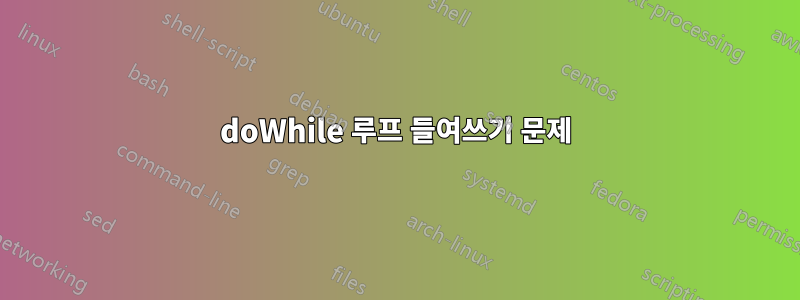
저는 [1]에 표시된 흐름도에 대해 do-while 루프를 사용하여 여러 루프 문을 작성하려고 했습니다. 그러나 들여쓰기를 관리하는 것은 어렵습니다. 누구든지 이 문제에 대해 도움을 줄 수 있나요?
\documentclass{article}
\usepackage{algorithmicx}
\usepackage{algpseudocode}
\algdef{SE}[DOWHILE]{Do}{doWhile}{\algorithmicdo}[1]{\algorithmicwhile\ #1}%
\begin{document}
\begin{algorithmic}
\Do
\State a,b,c,d,e,m,n
\doWhile{$!f$} % <--- use \doWhile for the "while" at the end
$g$
\Do
\State abc
\doWhile{$!h$}
$i$
\Do
\State Pv
\doWhile{$!j$}
$r s t $
% \doWhile{$!$}
% \State l
\end{algorithmic}
\end{document}
문제는 들여쓰기입니다.
답변1
프로그램 텍스트의 공백은 일반적으로 프로그래밍 언어에서 무시되지만 일반적인 관행에 따르면 들여쓰기는 프로그램을 더 읽기 쉽게 만드는 데 사용됩니다. 이러한 목적을 달성하려면 들여쓰기는 일반적으로 프로그램의 구조를 반영하는 일관된 방식으로 일부 스타일을 따라야 합니다.
당신이 가지고 있는 코드에서는 프로그램의 구조를 따라갈 수 없습니다. 불행하게도 algorithmicx패키지(참조문서) 또한 구조를 따르지 못하고 예상과 다른 방식으로 코드를 들여쓰기합니다.
특히, 나는(그리고 algorithmicx또한) 다음을 볼 수 없습니다:
무엇
$g$인가요. 추상적인 문장이라면 들여쓰기가\State $g$적절하게 되도록 작성해야 합니다.$i$및 에도 동일하게 적용됩니다$r s t$.왜 아래 줄이 바로 아래 가 아니라 오른쪽으로
$g$들여쓰기되기를 기대하는가 ? 이는 본문이 그 아래 줄까지 확장되는 블록 명령문(예: a )의 형태를 나타내는$g$경우에만 설명될 수 있습니다 .$g$while
\State(누락된 매크로를 추가하고 수직 공간을 추가한 후) 얻은 결과는 \medskip프로그램의 구조를 algorithmicx인식하는 대로 반영합니다.
반면에 실제로 블록 헤더 뒤에 임의의 들여쓰기를 도입하려는 경우 이 목적을 위해 새로운 유형의 블록을 정의할 수 있습니다(저는 이름을 로 지정했습니다 \Arbitrary{header} ... \endArbitrary).
\documentclass{article}
\usepackage{algorithmicx}
\usepackage{algpseudocode}
\algdef{SE}[DOWHILE]{Do}{doWhile}{\algorithmicdo}[1]{\algorithmicwhile\ #1}%
\algblockdefx[ARBITRARY]{Arbitrary}{endArbitrary}[1]{#1}
\begin{document}
\begin{algorithmic}
\Do
\State a,b,c,d,e,m,n
\doWhile{$!f$} % <--- use \doWhile for the "while" at the end
\medskip
\Arbitrary{$g$}
\medskip
\Do
\State abc
\doWhile{$!h$}
\medskip
\State $i$
\Do
\State Pv
\doWhile{$!j$}
\medskip
\State $r s t $
\endArbitrary
\end{algorithmic}
\end{document}
그 결과는 다음과 같습니다.
답변2
다음은 내가 LaTex에 작성한 중첩된 Do-While 기반 의사코드입니다. 누군가가 이를 확인할 수 있고, 나중에 같은 문제가 발생할 수 있는 다른 사람들을 위해 사용될 수 있습니다.
\documentclass[11pt]{article}
\usepackage[fleqn]{amsmath}
\usepackage[ruled,vlined]{algorithm2e}
\PassOptionsToPackage{noend}{algpseudocode}
\usepackage{algpseudocode}
%%%%%%%%%%%%%%%%%%
%% DoWhile algorithm macro definition
\makeatletter
\newcommand*{\algrule}[1][\algorithmicindent]{\makebox[#1][l]{\hspace*{.5em}\vrule height .75\baselineskip depth .25\baselineskip}}
\newcount\ALG@printindent@tempcnta
\def\ALG@printindent{%
\ifnum \theALG@nested>0% is there anything to print
\ifx\ALG@text\ALG@x@notext% is this an end group without any text?
% do nothing
\addvspace{-3pt}% FUDGE for cases where no text is shown, to make the rules line up
\else
\unskip
% draw a rule for each indent level
\ALG@printindent@tempcnta=1
\loop
\algrule[\csname ALG@ind@\the\ALG@printindent@tempcnta\endcsname]%
\advance \ALG@printindent@tempcnta 1
\ifnum \ALG@printindent@tempcnta<\numexpr\theALG@nested+1\relax% can't do <=, so add one to RHS and use < instead
\repeat
\fi
\fi
}
\usepackage{etoolbox}
% the following line injects our new indent handling code in place of the default spacing
\patchcmd{\ALG@doentity}{\noindent\hskip\ALG@tlm}{\ALG@printindent}{}{\errmessage{failed to patch}}
\makeatother
% end vertical rule patch for algorithmicx
\algdef{SE}[DOWHILE]{Do}{doWhile}{\algorithmicdo}[1]{\algorithmicwhile\ #1}%
\begin{algorithm}%\captionsetup{labelfont={sc,bf}, labelsep=newline}
\caption{Workspace boundary determination}
\label{alg:PoEG}
\begin{algorithmic}
\State Input $z_0,~z_f,~n,~m$
\State \quad \quad ~ $\Delta_z = \dfrac{z_0-z_f}{n}, \textit{tol}$
\State \quad \quad ~ $\varepsilon_f= 2\pi~, \Delta\varepsilon = \dfrac{\varepsilon_f}{m}$
\State \quad \quad ~ $k_{\textup{max}}, \Delta\alpha_0, i = j=1$
\medskip
\State Output $\boldsymbol{\theta}, \boldsymbol{\psi}, \boldsymbol{z} $
\medskip
\State initialize ~$z \gets z_0,~ \psi=\theta =\gets \emptyset$
\Do
\Do
\Do
\Do
\State $\Delta\psi = \psi + \Delta\alpha c\varepsilon$
\State $\Delta\theta = \theta + \Delta\alpha s\varepsilon $
\State $\psi = \psi +\Delta\varepsilon$
\State $\theta = \psi + \Delta\varepsilon$
\State Compute $\boldsymbol{J}_{dh}$
\State $k = cond(\boldsymbol{J}_{dh})$
\doWhile{$k<k_{max}$}
\State $\psi = \psi -\Delta\varepsilon$
\State $\theta = \psi - \Delta\varepsilon$
\State $\Delta\alpha = \Delta\alpha/2$
\doWhile{$\Delta\alpha > tol $}
\State $\psi(i,j) = \psi $
\State $\theta(i,j) = \theta $
\State $ j =j+1$
\State $\Delta\alpha = \Delta\alpha_0$
\State $\varepsilon = \varepsilon + \Delta\varepsilon$
\doWhile{$\varepsilon < 2\pi$}
\State $ \theta =0$
\State $\psi =0$
\State $\varepsilon =0$
\State $\Delta\alpha=\Delta\alpha_0$
\State $i=i+1$
\State $z_i=z+\Delta_z$
\doWhile{$z<z_f$} \\ % <--- use \doWhile for the "while" at the end
plot$(\boldsymbol{\psi},\boldsymbol{\theta},\boldsymbol{z})$\\ \medskip Note: $s$ and $c$ stands for sine and cosine, respectively.
%\endArbitrary
\end{algorithmic}
\end{algorithm}
\end{document}




